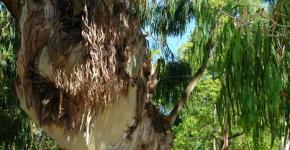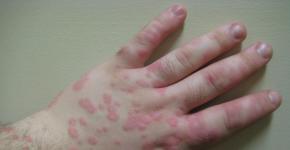Why the tree has not released the leaves in the spring. Fruit trees are dying. What to do
To root out or pardon is a dilemma difficult to solve. But there are 5 situations when it is definitely time to get rid of a tree.
If you carefully examine the state of fruit trees in the area, you will be struck by the fact that even under the same conditions and even in the neighboring areas, the plants are very different both in appearance and in their state of health. It becomes just painful to look at mature trees, where leaves do not bloom during the green riot. Such plants are more like scary scarecrows.
Not every gardener will be lucky to immediately manage on a completely empty area. Often gets the territory covered with rich vegetation inherited from past owners. Of course, there are positive moments here - there is no need to wait for a long time, until young plantings grow, with good care and in the old garden you can get a decent harvest. But there is a huge minus: emergency, sick and old plants that just need to be eliminated.
The reasons that it is time to remove a tree on your site may be:
- the tree grows right outside the house and shields the sunlight;
- the tree has withered as it grows in the shade of an older plant and it lacks much sunlight;
- the tree dried out from the heat or was badly damaged by pests;
- the tree has reached the age at which fruiting ceases, it just has already become too old;
- the tree stopped producing fruit after improper pruning;
- groundwater on the site is too high;
- freezing of roots and aerial parts.
1. The tree obscures the sun
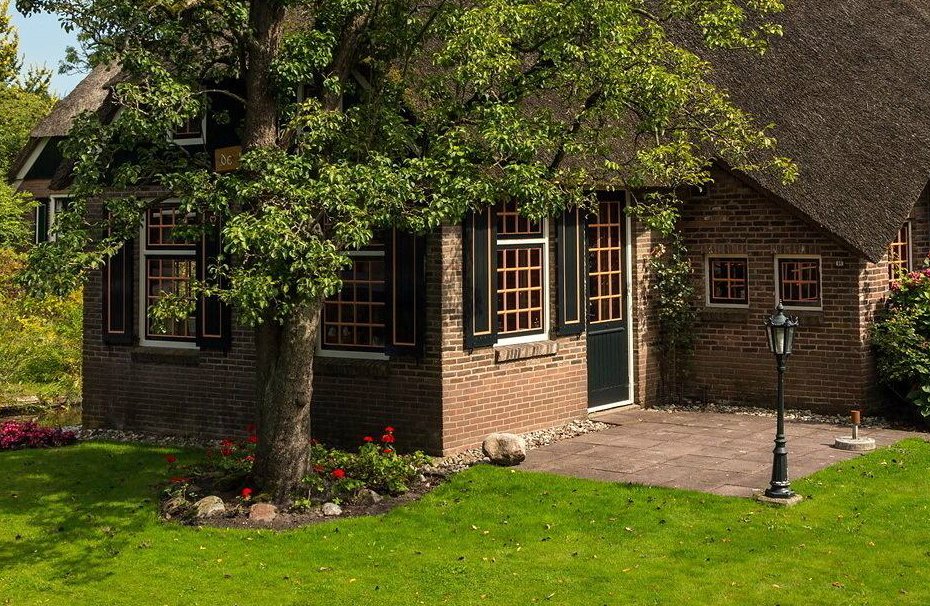


Sometimes there is such a problem - a tree has grown right under the window of the house. In such cases, darkness dominates the rooms, even if it is sunny outside! In some cases, it comes to the fact that during the day in the kitchen or in the room it is necessary to turn on the lighting - at noon the lighting in the house is like at midnight.
2. The tree has become too old
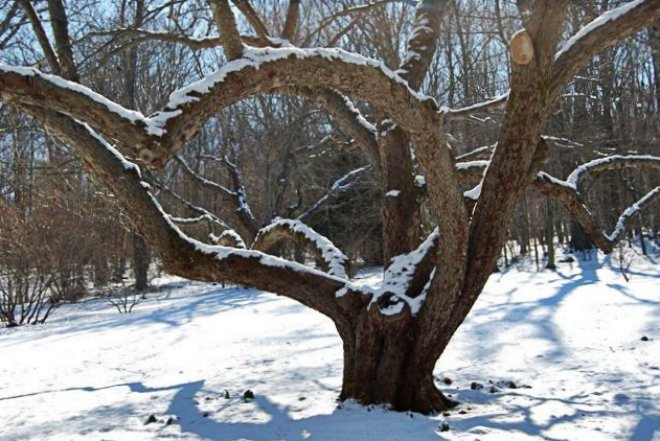
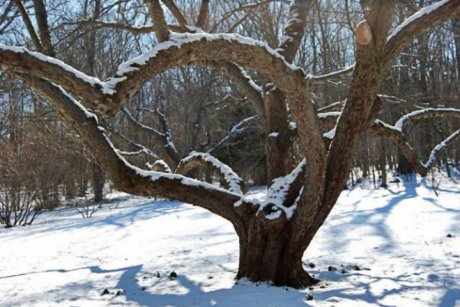
This period of tree development is different in that there is a complete crown death and the plant stem with a continuation of life only on the root neck. The overwhelming amount of fruit trees grown by means of grafts, and the growth near the root belongs to the stock. It makes no sense to try to rejuvenate such a tree, it must be removed.
3. The tree ceased to bear fruit after improper pruning.
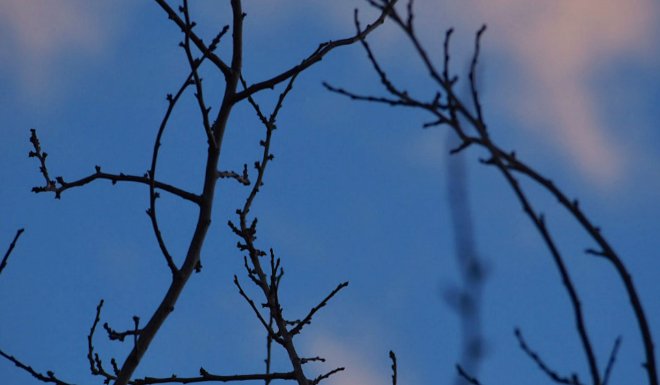
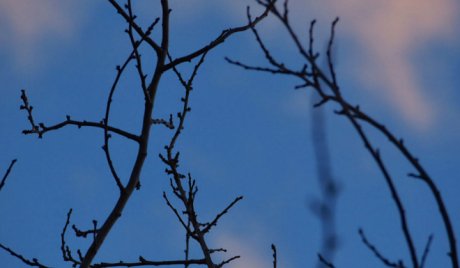
Inept and improperly produced trimming often leads to unnecessary thickening plant crown. As a result, at the end of the growing season, the young growth does not ripen, but continues to grow further, winter hardiness decreases in uncured wood, and the branches die.

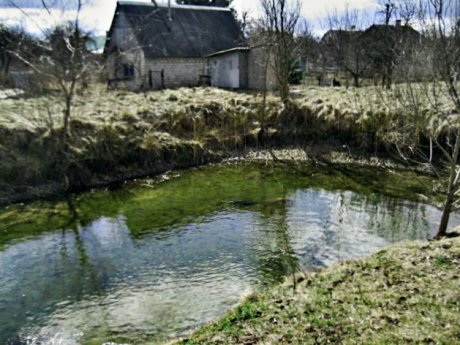
A frequent cause of death of fruit trees is high water table. Often this level is not normalized in low-lying areas even after draining. Here there is such a picture: while the plant has not yet grown, and the roots do not reach the water, the seedling develops well. But after a while, the roots penetrate deeper and, having reached the water level, fall into conditions of lack of air, because of that they partially die and are not able to fully feed the green mass of the tree in spring. In such conditions, the plant gradually dies.
5. Freezing of tree roots and crowns

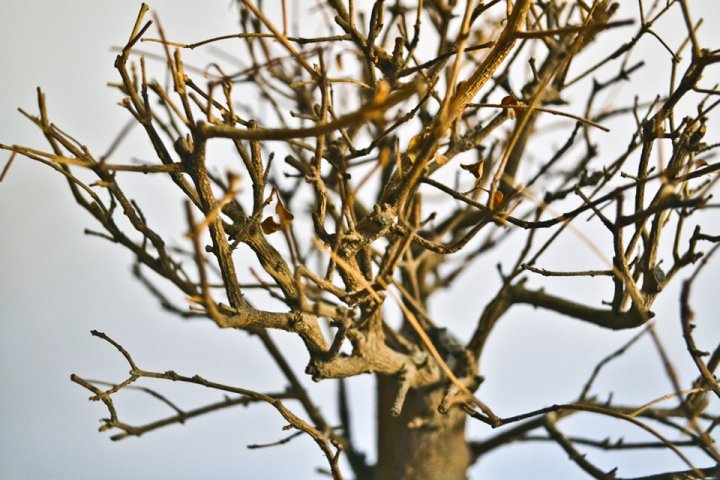
![]()
This reason becomes the culprit of the death of plants in the garden more often than a high level of groundwater. And suffer fruit trees mostly not from frosts, but more from sudden changes in temperature, which are inherent in our climate. In such a situation, you must first determine the degree of damage to the plant. To this end, small cuts are made across and along the fibers on the roots or shoots to see the color of the wood. If the wood color of the branches is dark brown, it means that it is dead tissue.
If the cuts on the wood opened brown fabric, then this indicates a slight freezing. If it is difficult to determine the level of damage in this way, then small twigs cut from a tree are placed in water in a warm room, covered with film on top of them, and after about seven days have passed, their condition is assessed. If the buds are not dissolved and do not even swell, then the branches of the plant, of course, are damaged. With a high degree of damage to the plant or if it occurs every year, the tree is best removed.
Of course, getting rid of trees in the garden is a pity, but sometimes it is simply necessary. If you are faced with an urgent need to uproot a tree, let you be comforted by the idea that you can always plant a young plant in its place.
Rescue dying trees
If you carefully look at the state of the gardens at the dacha and garden plots, it is easy to see that even in the same locality, fruit trees differ sharply in their state of health.
It is especially painful to look at trees that suddenly have no leaves in spring. They look like scary scarecrows. It is noteworthy that neither the reasons for this phenomenon, nor the measures for its establishment in the available literature are practically not covered. At the same time, I know from my experience and the experience of many of my neighbors that often such fruit trees can still be saved. Summarizing all the cases known to me, I want to tell you about the main causes of the death of fruit trees and how to resuscitate them.
High water table
As practice shows, the main cause of the death of fruit trees is most often the high level of groundwater in the area. Moreover, this level is often preserved in lowland gardens even after their usual drainage. At the same time, this picture is typical: while the tree is small and its roots do not reach the water, it develops normally. But then they gradually go deeper and, reaching the water, they get into anaerobic conditions, due to the lack of oxygen, the roots partially die off and cannot fully feed the elevated apparatus of the tree in the spring. Most often, the life of the fruit tree in the first year barely warms, and the next year it usually dies. Does this mean that such an outcome is inevitable? Fortunately, no. It is not necessary to uproot a tree, as inexperienced gardeners usually do. If measures are taken in time, all is not lost. Practice shows that even one of the following activities is quite capable of giving a new life to a fruit tree.
Balancing between the aboveground and underground parts of the fruit tree
This is achieved by the fact that in early spring, in order to avoid a deficiency in the nutrition of a tree, all its branches are cut more than 1 cm thick. At the same time, the entire crown, including the central conductor, is significantly shortened. At the same time, due to the better proportion between the damaged root apparatus and the above-earth part, the fruit tree (apple, pear, plum, etc.), as a rule, comes to life and in the very first year after such pruning it is quite capable of giving modest yields. The following year, after the same re-pruning, the harvest can be fully restored. It happened in my garden with one of the plums, which I saved from death and returned her fruiting.
The rise of the fruit tree to the level of the garden soil
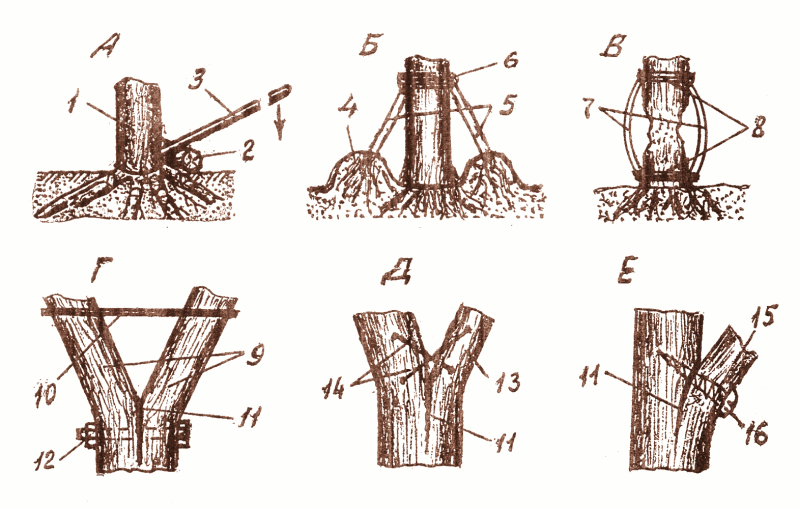
Rescue schemes for dying trees by raising the trunk to the level of the soil (A), replanting strong willows to the tree (B), grafting the rootstock under the crust around the lesion (C) and eliminating faults of the trunk and branches (D, D, E); 1 - shtamb; 2 - support; 3 - lever, vag; 4 - bulk soil; 5 wilds; 6 - wick grafting zone; 7 - stock; 8 - vaccination sites; 9, 13, 15 - breaks off the trunk or branches; 11 - faults; 12 - bolt, 14 - brackets; 16 - screw.
This method is suitable for saving a dying tree at the age of 3-7 years. In this case, a support for the lever (vagi) is made of a strong pole with a diameter of about 8 cm and a length of 5-6 meters at a certain distance from the trunk (Fig. A). One end of such a vagi is securely attached to the stem of a tree, and a load is either suspended on the second one, or the person is gently pressed on it several times. About 10-15 buckets of water for disintegration of the earth are poured into the soil around the trunk in advance. In this case, the lever gradually raises the tree. And if the position of the lever is periodically fixed with a support, then within a few days the required level of raising the tree is achieved, and often even without damaging the roots. In this way, one of my neighbors in the area raised a pear, it came to life and gradually restored the former fruiting.
Replacing a tree trunk with wild and spring shoots
This technique (fig. B) and (fig. C) is well suited for old fruit trees, which began to rot and weaken the trunk. At the same time under the bark grafted top of these plants - already ready or close to fruiting. One of the neighbors in the area managed to get three instead of one remote apple in the same place, and in a very short time. One year later, he received a harvest from this tree that was about twice as high as it had been.
Freezing of the crown and roots
Perhaps this reason leads to the death of fruit trees, even more often than the previous one. And apple or pear trees suffer not so much from the frosts themselves, as from the extreme temperature differences characteristic of our climate. In this case, you must first establish the degree of freezing. For this, longitudinal and transverse cuts are made on the branches or roots so that the color of the wood can be determined. If the core and cambium are dark brown, then the branches or roots are damaged and they need help. If the cuts on the wood are brown, this indicates weak frosting. In doubtful cases, it will not be superfluous and such a check, in which the cut branches are placed in a warm room in the water, covered with a film and a week later, they are assessed. If the buds are not swollen and not dissolved, then the branches of the tree are obviously damaged. As experience has shown, the following measures can best help here:
a) in case of weak freezing of tree branches in the spring, even before bud break, it is necessary to trim the crown, this will ensure reliable reanimation of the tree. But with strong freezing of branches with pruned crown no need to hurry. In this case, you should wait for the moment when the tree begins to grow, and even then pruning grow tops from the dormant buds;
b) instead of pruning the crown, a technique that experienced gardeners have recently practiced works well. It consists in spraying obviously frozen trees with cold water before sunrise. If this technique is carried out in a timely manner, the branches of the crown are thawed for a long time, since the water released from the cells in the form of the smallest ice crystals is formed under conditions of slow heating. In no case can you use warm water in this case, as with the rapid self-thawing the crown of a tree is usually doomed to death;
c) when frostbite or tree roots freeze, its reliable reanimation is achieved by replanting 4-5 strong two or three year old dicks to the tree, which have a developed fibrous system. If these willows are planted in the holes filled with fertile soil and watered well, and the tops of a doomed tree are planted under the bark in the same way as shown in Figure B, then it gets efficient nourishment, moisture and comes to life. At the same time, it is impossible to add mineral fertilizers to the water, which increase the concentration of the solution and impede its progress through the vessels to the above-ground part. In the case of the formation of buds in the tree that has come to life, they should be cut off so that it becomes stronger and prepared for the cold by winter.
Rodent Damage
Such lesions arise, as a rule, when the shtacks for the winter were not properly covered or it was done somehow. To revitalize such trees, you can hold the following activities:
A) if rodents damage only the bark of the trunk and only partially bast and wood, then such a tree can be saved by grafting the rootstock, which has pointed ends, under the bark above the lesion site, i.e. inoculate a “bridge” on three or four sides of the trunk (fig. B);
B) if the tree has rodents damaged to half the diameter of the strain-ba, then to save it, you can use either root-jump plants or specially grown rootstocks with their graft to the trunk above the damage, similar to the one shown in Figure B. As experience shows, systematic poly-wah, dressings and shading the root system of rootstocks reaches garden soil within 1-2 years, and its development is enhanced. It should be noted that in cases reflected both in Figure B and in Figure C, the sites of vaccinations should be covered with plastic wrap, which should be replaced in the second year so that there is no over-bracing of wood. Equally important in this is the binding of the scion and rootstock through the film with thin nails with cardboard washers.
This phenomenon is quite often manifested due to the large mass of adhering and frozen snow, abundant crops, strong winds, and sometimes from careless handling. The result of all this is most often the fractures of double trunks growing at an acute angle, breaks of large fruit-bearing branches and fractures of individual veins. Experienced gardeners at the same time for the rescue of such trees use the following activities, links to which are not available in the literature:
A) when breaking double barrels, it is justified to first pull them down with a wire or ropes over the fault, and then a bolt screwed in by a nut is inserted into the drilled hole (fig. D);
B) when breaking thinner trunks with a diameter of 4-5 cm or when breaking off a large fruit-bearing branch after a screed similar to the previous one, the use of construction brackets hammered crosswise from opposite sides is effective (fig. D);
B) when breaking off a small branch from the trunk, a reliable connection is provided by the installation in the place of breaking the screw, but so that its end does not go out (fig. E).
It should be noted that the place of break before installation of the temporary screed should be disinfected with a solution of potassium permanganate, and after installing a bolt, bracket or screw all the break lines should be thoroughly missed with garden pitch, protecting the joints from moisture and rot.
Speaking of faults, one can not fail to mention the occurring fractures of the trunks of old trees: apple trees, pears, etc. Such trees should be cut down and uprooted, and then prepare a place for new plantings. If a young tree is broken (apples, pears, plums), then it should be cut down just below the place of breaking, clean the cut and carefully cover it with boiling. In this case, dormant buds awaken below the slice. From the emerged shoots need to leave more powerful and form from it a new trunk and a new crown. The examples given above from the experience of gardeners prove that in the overwhelming majority of cases, threatened fruit trees can be successfully saved and restored to their fruiting and beauty.
Anatoly Veselov, gardener
If you are thinking about updating your orchard, you will certainly have a question about how to choose the ideal seedlings of fruit crops and ensure a good start for them.
Usually plant nurseries offer annual or biennial seedlings. Older, three or four year old plants can also be used, but their cost is significantly higher and they generally take root worse because the roots are more damaged when digging.
A good sapling should have a root system developed - it is desirable that the roots are branched, at least 20 cm long for one-year-olds and at least 30 cm for two-year-olds, without nodules and jaundices.
The above-ground part should be about 1 m for annuals and 1.5 m for two-year-old saplings. Biennials should also have at least three side branches at an angle to the trunk of 45 degrees or more. The bark of the stem and branches should be smooth - shriveled indicates that the seedling is dried.
Imagine the perfect two year old sapling
The presence or absence of the apical bud is not so important - anyway, before planting, it is necessary to prune the seedling for better branching. But if the top has dried up or there is a suspicion that it has frozen slightly - you need a signal, it would be better to look for another seedling.
Side shoots, from which later formed skeletal branches of a tree. A two-year sapling should have three pieces.
The eye can distinguish the growth limit of the first and second year. In addition to it, damage to the bark can be detected on the stem: banners from the garter, cracks, scratches and burrs. Saplings with similar defects can lag behind healthy for several years. If possible, choose a plant with whole bark.
It is better if the side branches are immediately located at an angle of more than 45 degrees to the stem: in such a plant and in the future, the crown will be formed harmoniously.
The height of the future trunk (trunk to the first lower branches) hardly changes with time, so the lower branches should immediately be located at the level you need. This is especially important if your apple trees are on dwarf and semi-dwarf rootstocks.
The bend in the lower part of the stem is the vaccination site. All that is lower is a stock (wilderness), the seedlings of which must be cut immediately, without waiting for the season to be cut.
The cut of the stock should be smooth, dried and clean, without hemp. Within a year or two, such a cut will completely grow.
The root neck is located 2-3 cm above the topmost one, even if it is a thin root. The ground must be flush with this place, even when the ground in the landing pit settles.
Skeletal roots should be at least three, better - five. Make sure that they are not damaged.
The more side roots, the better. Cut the tips with a shears, the cuts should be light and wet - it means that the roots are not dried and alive.
A farewell to those who buy in the spring
It is necessary to check whether the seedling is not frozen. If you make an oblique cut in the upper third of the shoot, the bark should be greenish and the wood should be light. Frozen sapling will have a dark cut. It is difficult to determine how critical the damage will be; it’s just clear that buying such seedlings is a risk.
Undoubtedly, the presence of leaves is the best evidence that the sapling is alive! However, now you need seedlings, which have not even started or just started budding. That they have more chances to settle down.
To live well before landing
If you know that you cannot plant right away, it is advisable to wrap the roots as soon as possible with a wet cloth, put them in a plastic bag and store the seedling in a cooler place. If you plan to plant it right there, you just need to hide the roots in the bag. In the garden, seedlings are better to withstand at least 2-3 hours (you can spend the night) in water, placing them in a bath, tank, barrel. At the same time, it is even good to dip them “with the head” so that not only the roots but also the branches absorb the water.
With landing we hurry
It is possible to plant in the spring as soon as the earth thaws, and approximately until the end of April, the sooner the better. The deadlines are mainly determined by how much the leaves of the seedlings have blossomed. If you have not yet dissolved, it is quite possible to plant in the first half of May.
Before planting, it is useful to treat the roots with a root formation stimulator. Seedlings with a closed root system, that is, growing in pots or containers, can be planted in the summer.
The place is the best and you can't be sorry
Most tree fruit crops are light-requiring and, if possible, should be planted "in the sun". Especially love the sun pear, cherry, apricot and cherry plum; to a somewhat lesser extent, apple and plum. Cherries and some berry crops, such as currants, are relatively shade tolerant.
The intervals between the planted trees must be at least 5 m for pears, cherries and apples on a common stock; not less than 3 m for an apple tree on a semi-dwarf rootstock, plums, cherry plum; not less than 2 m for cherries and apples on a dwarf stock and not less than 1 m for berry bushes.
We dig holes as usual
The worse the soil in the garden, the wider and deeper it is necessary to dig. The diameter of the pit can vary from 80 to 150 cm, and the depth - from 60 to 100 cm. To fill the pit, it is better to mix good land with rotted manure and sand. And remember, for most fruit crops, weakly acidic or neutral soil is needed.
Do not forget to drive a stake into the bottom of the pit so long as it is 80 cm above the ground. Stakes need to score a little south of the center of the bottom of the pit, later I will explain why.
Let's look sapling
Usually a sapling in the lower part of the stem has a small knee (bend).
This is a place of grafting a cultivar on a stock. Some gardeners believe that this bend should be directed in a certain way, for example, to the south. In reality, orientation to the cardinal points has no fundamental significance. It is more important to plant a seedling on the north side of the stake so that it covers the stem from the sun in winter (this causes damage when the temperature drops sharply at night). It is clear now why we drove a stake south? In the autumn it is good to whitewash a tree - the white trunk reflects light and heats up much less. Some gardeners take the place of grafting on the root neck (although the place of grafting may well be 5-10 cm higher than the real root neck) and deepen the seedling when it is planted to its level. This is a serious mistake that is fraught with heating and soaking the bottom of the stem and the death of the seedling.
When a seedling grows in a nursery, its root neck is located at ground level. Almost the same sapling should be buried and when planting in the garden. The exceptions are apple seedlings on dwarf and semi-dwarf rootstocks, which in principle can be buried almost to the site of vaccination.
How to determine the location of the root collar, if the seedling is dug? An experienced gardener will find it by changing the color of the bark during the transition from the root to the aboveground part, but usually do it this way: the uppermost root or even the thinnest root of the seedling is found and measured from it upwards 2-3 cm. The root neck is located approximately at this place . To make it easier to control its position during planting, you can make a mark on the seedling marker.
Do not trample, and shed
Watering when planting should be abundant, even if it rains - up to three buckets per sapling. With abundant watering the soil around the seedling acquires the consistency of jelly and does not need trampling. During planting, as the ground is poured and water is added, the seedling is slightly tightened up so that its root neck is 3-4 cm above the ground surface.
You need to deal with your groundwater.
If the groundwater is close, selecting fruit crops, it is necessary to take into account the depth distribution of the main mass of roots. On pears and apples, they go down by 2-2.5 meters on ordinary stock. On plum, cherry, and apple trees on semi-dwarf rootstock - by 1.5 meters. On apples, on dwarf rootstock - by 1 meter. On berry bushes - by 0 , 5 m.
If the groundwater is higher, it is advisable to plant on the mounds. A mound is filled with a height of at least 60 cm and a diameter in the upper part of the order of a meter. Before pouring a mound, one should dig a hole almost to the level of groundwater and fill it with fertile soil. You can put a flat slate sheet on the bottom of the pit so that the vertical roots begin to grow horizontally. The mound should not crumble, so its edges should be strengthened.
After planting the land plentifully shed the soil should be saturated with water to tightly cover the roots. You may have to do this in several visits. And then chatter.
In winter, the mounds freeze over the surrounding land. The roots of apple trees on dwarf and semi-dwarf rootstocks, whose resistance to freezing is noticeably lower than that of ordinary rootstocks, can suffer. Therefore, I advise you to cover the hills with fir branches.
Everything was done right - what next?
Is it necessary to trim the seedlings after planting and how to do it? Cherry seedlings do not need to be cut. Typical annual (unbranched) seedlings of other crops after planting should be cut at a height of 70-80 cm from the ground. This is necessary in order to stimulate the growth of lateral branches, usually several new shoots grow during the season. Already as they grow, it is necessary to choose the so-called central conductor from the upper, more vertical shoots, and from the lateral shoots leave 3-4 shoots directed in different directions and having angles of separation from the trunk of more than 45 degrees. All other branches and twigs are removed without leaving even small stumps. If as the branches grow, it became obvious that all the angles between them and the stem are sharper than necessary, then until the shoots are woody, they can be forcibly bent to a more horizontal position and fixed.
What rejoice at the end of the season?
In the fall, your already two-year-old sapling should have a stem (part of the trunk from the ground to the first branch) of the order of 50 cm, 3-4 side branches and a central conductor (vertical shoot).
Similarly, ideally, any standard two-year-old sapling should look if you purchase it in a nursery. If a specialist didn’t immediately cut a seedling “for planting” to you, then, planting such a seedling, shorten its center conductor and side branches by about one third, if their length is less than 50 cm, and half, if more than 50 cm. During the summer You also need to select the center conductor and avoid sharp corners between the trunk and the branches.
Container saplings are convenient ready to wait long for planting, they can be planted throughout the season. But there is a significant drawback: the root system is more difficult to check
It is advisable to dig a hole in advance. In addition to land, you need a well-rotted manure and compost. The pit should be filled with a decent hill, and even have a reserve of land, taking into account the fact that the soil will settle.
A good start will allow the sapling to quickly enter the time of fruiting. And then - annual care: meaningful pruning and good-quality feeding.
What should not be forgotten to do:
- Watered regularly, especially if there is no rain.
- Pristvolny circle to free from weeds, especially in the early years.
- Mulch well rotted manure or quality compost. Mulch usually to the level of the root collar, not higher!
- Feed with mineral fertilizers: in June - with nitrogen fertilizers (2-3 spraying of leaves with 0.5% solution of urea); in July - complex (nitrophoska, azofoska); in August-September - phosphate and potash (superphosphate, potassium sulfate or phosphate-potassium fertilizers).
- Whitewashing protects the tender young bark from overheating and draining while the roots are still not fully working. Especially carefully handle cut stock and other damage.
- In the early years, thorough protection from mice is required. Make sure that the stem is closed from the ground itself - it is on the border of the soil and snow that the mice make their moves.
As such, it was not, the lion's share of the site was planting, and the beds and fruit trees could only divide the space around the house. In the front garden, as a hedge, penetrating the old picket fence with elastic branches, they grew by themselves, and behind them, closer to the house, were several cherry trees.
These few trees gave us a poor but stable harvest of fragrant sour northern cherries. It happened from year to year, and it seemed unshakable and commonplace phenomenon. At the same time, I don’t remember my grandmother to care for cherry trees. They, like the currant, lived next to us with their own independent lives.
Subsequently, planting apple and cherry saplings on my plot, I expected the same result. Alas, this did not happen. Very often in the spring I have to observe a sad picture - a young fruit tree does not wake up after a winter sleep, or, waking up and starting to dissolve small leaves, suddenly dries out in the bud. It happened this spring. I didn’t wake up another cherry, and now I only have one tree left from the planted four varietal cherries.
![]()
cherry with live buds
The question became acute, and it was already impossible to postpone the search for a way out of this situation. The attentive reader of the Green Blog could not help but notice that the main idea of my articles is the idea of the inadmissibility of using any artificially created chemicals on earth. But, all the sources with which I got acquainted, trying to figure out how to prevent, talked about one thing: it would not be possible to do without chemistry.
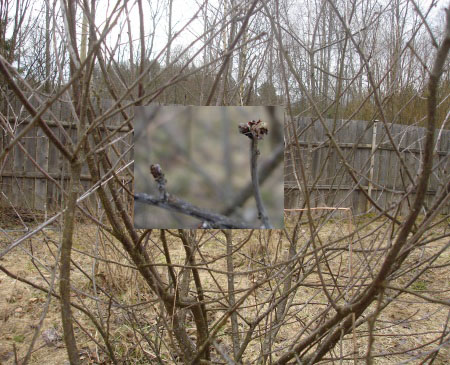
And this tree has died, dry non-living buds
I realized that in my case it is most likely a monilial burn. I repent, I made the decision and stopped at the drug Chorus, which has not only a therapeutic effect, but also a preventive one. The manufacturer claims that it does not harm the bees, but is dangerous for the fish if it enters the water. In addition to a single burn, this drug helps protect fruit trees from fruit rot, cluster sporosis, coccomycosis, Alternaria, scab, and powdery mildew. Chorus can be used in wet, wet weather (but not in the rain) and low air temperatures; in addition, two hours after treatment, the drug is not washed off by rain.
So I sprayed cherries, plums, young apple trees, cherry plums and sea buckthorn. After 10 days, the treatment will need to be repeated. I can only talk about the results of the work done in a year. I really hope that the losses in my garden will stop.
We have already written about pruning old trees with neglected crown, but pruning trees damaged by frost is not less relevant. In severe and extreme winters, which recur periodically, fruit trees suffer not only from critical temperatures, but also from usual long frosts (up to -20 ° C, especially without snow cover), strong winds accompanying such frosts, and sharp temperature drops. , especially from the return from the long thaw to frost.
The trunk and skeletal branches of the tree consist of different tissues in which resistance to freezing is not the same. The least stable of other fabrics is the core. The more resistant wood is the bark, and the most resistant is the cambium (regenerating tissue that is placed under the bark). The tree is relatively easy to withstand icing of the core, worse - wood. But severe damage to the cambium is the death of the plant.
And, on the contrary, the preservation of a significant layer of the cambium is a prerequisite for the regeneration of other tissues (up to wood) and the restoration of the tree as a whole. However, it should be borne in mind that during the growing season and the cambium becomes vulnerable - its cold resistance is very weak. It is during this period (spring, autumn) that severe icing occurs.
The root system is especially sensitive to low temperatures.
The freezing of the soil to -8 ... -10 ° C causes damage to the roots of cherry, apricot, peach, many apple rootstocks, pears. And with a decrease in soil temperature to -12 ... -14 ° C seedling rootstocks of apples, pears, and cherries are damaged.
If only fibrous roots are damaged, and the leading roots and their cambium are intact, the trees are restored. But with their strong freezing, the trees are doomed.
How to determine the degree of damage?
Different parts of the tree and their tissues are damaged in different ways: the death of the kidneys, the browning (in various shades) of wood, the cores, sunburn, peeling and cracking of the bark, cambium, icing of the forks of the branches, damage and the death of the root system.
But, in turn, all these forms of damage can have different degrees. They define it as follows: in order to reveal the degree of freezing of the kidneys (the mildest form of frost damage), several branches, cut in various parts of the crown, are placed in water. By the number of buds that did not develop, calculate the percentage of their death.
To determine the degree and face of freezing of the tissues of the branches and roots, transverse and longitudinal sections are made on them. With a slight damage, they acquire a yellowish tint, and with an average - light brown. With severe - brown, and with complete death - black.
The bark and cambium, in the case of icing, first turn red, and then, when they dry out, trapped areas are formed. Over time, they crack, falling out of oblong stripes, exposing the wood. When severe frostbite smell alcohol fermentation.
The signs, degree and nature of frosting are not detected immediately, but in several stages. The first stage is preliminary - one and a half to two weeks after the critical frosts. More clearly - after the thaw, that they have changed. The second stage (longer) - after bud break. The third stage (final) - in the early summer of the current year or next.
Weakly and moderately frostbitten parts of the tree can be saved (with proper treatment). And it is difficult to frostbite - are doomed. True, such ones may not die off immediately (depending on the severity of icing). Complete their destruction evident in the first spring. With heavy frosting (brown coloration) die off in the early summer of the current year. With less severe ones, they can stretch to the second summer, or even the third, but they will all the same die.
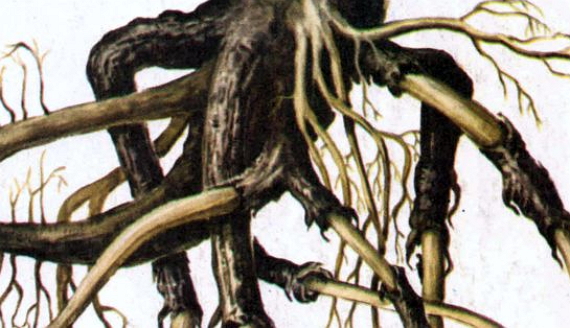
How to prevent frosting?
To avoid damaging frosts the trees, there should be preventive measures. Among them is the event of pruning. They have to:
- to promote the early and effective development of the photosynthesis apparatus, optimal nutrition, accumulation of spare substances during the spring and summer - as the main factor of winter hardiness. To do this, pruning in each of its links must be literate, performed with an understanding of the consequences of each of its parameters, method, taking into account the characteristics of breeds, varieties, age periods. The special role of this crop is to prevent imbalance and generative growth processes, which weakens and drains the tree;
- in the fall - to prevent the consumption of deferred reserve plastic substances on the growth, delayed (which weaken the hardiness of the plants). In addition to the smart system of watering, fertilizing, and so on, literacy of pruning is very important here, including the inadmissibility of its redundancy, which, together with other reasons, leads to a delay in growth, being late with falling leaves, non-healing fabrics, which in turn entails winter drying and frost damage;
- special attention during pruning should be provided to prevent acute angles of detachment of skeletal branches of all orders, for which trees suffer greatly from frost. The angles of divergence of 50-60 ° provides the best anti-aging tissues and frost in places of bifurcation.
The sharper the angle of discharge, the greater the likelihood of icing at the base of the branches; - the angles of discharge of 50-60 ° best contribute to the appearance of foxes, the uniformity of fouling of the branches along the entire length, protecting them and this from freezing. The exposed sections of the branches were always more vulnerable. This should also be able to prevent the shortening or cutting out - depending on the situation;
- considering that the resistance of trees to critical temperatures significantly decreases after pruning in the first half of winter, even in the southern and adjacent areas where pruning is performed and in the winter period it should be started with the most frost-resistant rocks and variety. And among the varieties of the same frost - primarily because of the summer and autumn, in which the wood is fully ripen before.
But these are measures to prevent frost damage to trees. And what to do when such damages have already become real facts? What methods and degrees of trimming are used?
How to prune frozen trees?
Kidney damage is considered the easiest type of frost damage.
1. When partial loss of fruit buds from frost and freezing fruit shoots are pruned weaker, given the percentage of kidney destruction. Or, by spring pruning, reserve shoots, branches are left, and after frost, they are re-normalized.
2. With a very large loss of fruit buds (more than 70%), pruning of fruit shoots is performed at the beginning of flowering, when the degree of damage is clearly visible.
3. When they are completely destroyed, the crown is thinned to normal intervals, shortenings are performed according to the norms of this age period, and when reduction and rejuvenation is required (despite the situation without regard to crop losses).
4. When the growth buds are damaged, the growth of shoots is delayed on the young branches. Later, dormant buds begin to bloom in the old parts of the branches. When the growth of shoots begins on them, all the frozen tops of the young branches of the branches are cut above the outer or lateral branch with healthy buds, or over the shoot, which has a good growth (when it reaches 15 cm).
5. With weak freezing of the tops of the skeletal branches or their forks or shtamba, the roots (for intensive yellowing of their tissues) it is appropriate to thin out and shorten the frozen branches of all orders to two-year-old wood before budding. At the same time, the semi-skeletal and overgrowing branches subordinate to their own carriers. All this will increase the flow of nutrients to damaged parts of the tree and accelerate their regeneration and restoration. But by a barely noticeable yellowing of the tissues, they are cut off just like healthy ones.
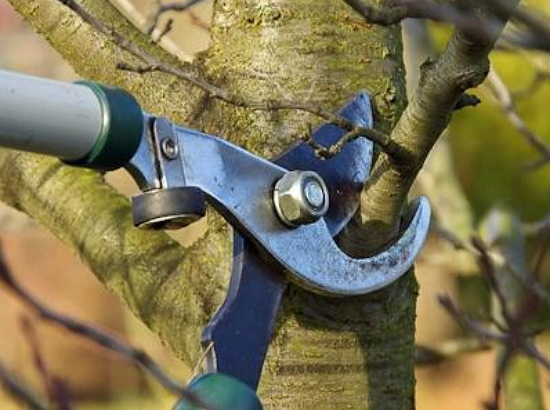
6. Only the peripheral part of the branches is severely affected, and the stem, the skeleton of the crown and the vegetation branches growing in its middle zone are practically healthy (this type of damage is typical for trees with late growth). On such tops of the buds in the spring does not bloom. When buds bloom on the intact parts of the branches and the growth of shoots begins, then the damaged tops cut off the shoot, which grows well and in the right direction. But it is better to carry out a light rejuvenation for 3-4-year-old wood as early as possible.
His task is to prevent the waste of nutrients by heavily frozen limbs that will die off anyway (although perhaps not immediately). However, the influx of nutrients to the remaining lightly damaged parts of the branches adjacent to them will increase. The sooner the heavily frostbitten limbs of the branches are removed, the more successful the restoration of the left parts will be.
7. Trees have an average degree of damage only to wood (light brown shades), and the cambium, dormant buds and outer vegetation branches are mostly preserved. For such damage, the leading ability of wood is significantly deteriorated. Therefore bud growth and delayed onset. The shoots are weak. The leaves are small, they are few. This, in turn, slows the growth, renewal of layers of wood.
In order to improve the damaged conductive system, it is necessary to increase the nutrition of the educational tissue - cambium, and for this it is necessary to somewhat reduce the crown volume with the help of a light rejuvenating pruning for 2-3-year-old wood. As a result, the cambium enhances regenerative processes, forms new wood tissues, and renews them. Her browning gradually disappears, the trees recover and resume normal fruiting.
8. Sunburns, freezers on the trunks and branches have the appearance of dry bark spots (especially from the south and south-west sides), which crack, peel off by elongated stripes, exposing the wood. If the frost is small and the bark is not peeled off, the trunk or branch should be tightly tied with a cloth. With severe damage to the bark, cambium and outer layers of wood in small areas, the dead bark is removed, bare wood is cleaned with a garden knife, disinfected with 3-4% Bordeaux liquid and covered with garden pitch.
If, however, severe damage in large areas, then, in addition to all these procedures, they are still on top and covered with a mixture of mullein with clay (1: 1). Korovyak contains growth substances that stimulate the activity of cambial cells and accelerate wound healing.
They also perform thinning and rejuvenation on 3-5-year-old wood (depending on the severity of the freezers), pursuing the same goals as mentioned above (paragraph 7 - the last sentences). And branches with heavy injuries (more than half of their girth) are cut on the ring.
9. When a burn or frostbite has engulfed a short but wide portion of the trunk, it is advisable to inoculate with a bridge (a pair of cuttings is implanted in lower sections into the healthy lower edges of the wound, and in upper sections in the upper edges of the wound).
If the damage is in the form of a long, wide section of a shtambe, then splicing of the upper sections of the seedlings with the healthy upper part of the shtamba above the frostbout may be effective. After vaccination and growth through coppice shoots, the metabolism between the roots and the crown is restored. Strong coppice shoots for good preservation of the root system are formed in the first spring after the damage to the trunk.
10. Bark, cambium, wood in forks of branches mature more slowly and later than other parts of the tree. And the more, the more acute the angle of a discharge. Therefore, in harsh winters, sharp forks are frozen. In places of damage, the bark lags behind, the wood is exposed. These sites are treated and treated in the same manner as described in clause 8. In addition, branches with minor injuries produce a slight rejuvenation. With significant - average. With heavy - strong, or cut.
11. It happens that frozen buds are plentifully laid on the frozen trees last season. Their normalized pruning. And after the formation of the ovary, they are rationed by hand, leaving a distance of at least 15 cm between them. This is due to minor injuries. With significant - twice as rare, with heavy ovaries, and even better - flower buds are removed.
12. Trees with complete loss of bark, wood and cambium in the aerial part, and the roots (thanks to the snow cover) are alive. In this case, not the old trees in early spring are cut to a “stump”, to the healthy part of the trunk preserved under the snow. Of the shoots that appear later (above the grafting site), the strongest are used to form a new crown.
Another 1-3 shoots leave a ditch moderately around the hemp so that they do not allow for the death of tissue around the circumference. For several years, these shoots periodically pinch so that they do not compete with the main shoot (which is not pinned, but are formed in the same ways as the seedling). When auxiliary shoots fulfill their role, they are removed.
13. A tree has a badly damaged cambium on a shtamba (more than half its volume). This often happens when severe frosts (-20 ° C) occur at the end of autumn (November), when the trees are not fully prepared for winter. In the absence of snow cover does not remain healthy, even the lower strip of the trunk. Such trees are bad, they are uprooted.
14. Stamb and main branches died in the trees. But the roots and the periphery of the crown remained healthy. There is a continuous interaction between healthy parts of the tree and there is no possibility to restore it. (No anti-aging pruning will help). It remains the only way out - trimming "on a stump."
15. A tree with an intact crown, but with partially frozen roots. (This happens with significant frosts, up to -20 ° C in snowless winters, when the ground freezes to -7 ... -8 ° C). The rejuvenating pruning helps to improve the root system: with minor injuries - light, significant - moderate, for very serious - strong. Anti-aging pruning reduces the volume of the crown and thereby restores the impaired correlation between the aerial part and the root system of the tree.
Snow cover or other covering material with a thickness of at least 5 cm significantly reduces the freezing of the roots.
16. Trees with intact crown, but with frostbitten roots, including the cambium of the leading roots. (It happens in snowless severe winters and deep soil freezing to -12 ... -14 ° С). In this case, it is difficult to count on the return of trees to life. They are uprooted.

